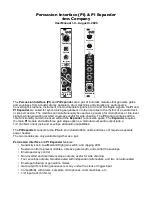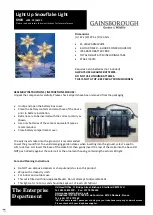
When adjusting the
PI
, consider what type of microphone
or sensor is being used, how it is mounted, and what sort
of object it’s sensing. For example, piezo discs and
contact mics output a wide range of signal levels
depending on how firmly they’re attached to the object
being struck. A metal piezo disc directly attached to a
metal object will produce will likely output maximum
voltage regardless of the velocity at which the object is
being struck. To mitigate this effect, you can place some
rubber or soft material between the contact mic and the
object. This will improve the dynamic range of the sensor.
On the other hand, a contact mic loosely set onto a soft
object may result in very little signal when the object is
struct. Attaching it more firmly or to a more firm section of the object can help in this
situation.
Using a standard drum mic attached to a drum is a good way of introducing dynamics to your setup.
Drum mics are durable and typically easy to attach. Clipping a microphone to the rim of a drum will
enable you to use the rim as a trigger source more accurately, while picking up less of the signal
coming from the drum head.
If you have two
PI
modules, an interesting application includes using two microphones on the same
drum, with each mic running into a separate
PI
module. For example, you could place one contact mic
on the rim and send it to one
PI
, then place another contact mic on the drum head and send it to a
second
PI
. This will allow you to use a single object as two separate voltage / gate sources.
Page of
11
16
Figure 9


































